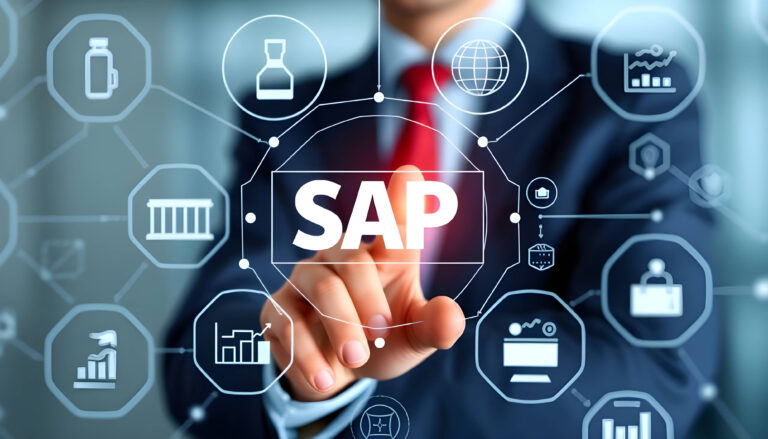SAP Functional Modules
Unlocking Business Efficiency with SAP Functional Modules
In today’s fast-paced business environment, organizations require robust and flexible systems to streamline operations, enhance productivity, and make data-driven decisions. SAP, a global leader in enterprise resource planning (ERP) solutions, provides a comprehensive suite of functional modules designed to address various aspects of business management. In this blog, we will explore the core SAP functional modules, their unique features, and how they contribute to organizational success.
What are SAP Functional Modules?
SAP functional modules are specialized components within the SAP ERP system that manage specific business processes. Each module focuses on a particular area of business operations, allowing organizations to integrate and manage their processes seamlessly. By implementing these modules, companies can automate tasks, gain real-time insights, and improve overall efficiency.
1. SAP FI (Financial Accounting)
Purpose:
SAP FI is the backbone of financial management within SAP. It handles financial transactions and reporting, ensuring that all accounting activities are processed accurately and in compliance with regulatory standards.
Key Features:
General Ledger: Central repository for all accounting transactions.
Accounts Payable & Receivable: Manages vendor and customer transactions.
Asset Accounting: Tracks and manages company assets.
Benefits: Streamlines financial reporting, enhances transparency, and ensures regulatory compliance.
2. SAP CO (Controlling)
Purpose:
SAP CO provides tools for internal management accounting. It helps organizations monitor and control costs, analyze profitability, and make informed financial decisions.
Key Features:
Cost Center Accounting: Tracks and controls costs associated with different business areas.
Profit Center Accounting: Analyzes profitability across different segments.
Internal Orders: Manages and monitors specific cost-related projects.
Benefits: Improves cost management, enhances financial analysis, and supports strategic planning.
3. SAP SD (Sales and Distribution)
Purpose: SAP SD manages the end-to-end sales process, from order creation to billing. It ensures efficient handling of customer orders and distribution processes.
Key Features:
Order Management: Handles sales orders, quotations, and contracts.
Pricing and Billing: Manages pricing conditions and generates invoices.
Shipping and Delivery: Oversees logistics and delivery management.
Benefits: Enhances customer satisfaction, streamlines order processing, and optimizes sales operations.
4. SAP MM (Materials Management)
Purpose: SAP MM manages procurement processes and inventory. It ensures that materials are available for production and that procurement activities are efficient.
Key Features:
Purchasing: Manages procurement of goods and services.
Inventory Management: Tracks inventory levels and movements.
Material Master: Maintains detailed information about materials.
Benefits: Reduces procurement costs, optimizes inventory levels, and improves supply chain efficiency.
5. SAP PP (Production Planning)
Purpose: SAP PP supports production planning and manufacturing processes. It helps organizations manage production schedules, materials, and resources effectively.
Key Features:
Bill of Materials (BOM): Defines the components needed for production.
Work Center: Manages production resources and capacities.
Routing: Determines the sequence of operations for production.
Benefits: Enhances production efficiency, reduces lead times, and improves resource utilization.
6. SAP QM (Quality Management)
Purpose: SAP QM ensures product quality throughout the manufacturing process. It helps organizations maintain high-quality standards and comply with regulatory requirements.
Key Features:
Quality Planning: Defines quality standards and inspection plans.
Quality Inspection: Monitors and controls quality during production.
Quality Certificates: Manages certification processes for products.
Benefits: Ensures product quality, reduces defects, and supports compliance with quality standards.
7. SAP HCM (Human Capital Management)
Purpose: SAP HCM manages human resources processes, including employee data, payroll, and talent management.
Key Features:
Personnel Administration: Manages employee records and HR data.
Payroll: Processes employee compensation and benefits.
Talent Management: Supports recruitment, performance management, and training.
Benefits: Streamlines HR processes, enhances employee engagement, and supports talent development.
8. SAP PS (Project Systems)
Purpose: SAP PS manages projects from planning to execution. It helps organizations oversee project costs, timelines, and resources.
Key Features:
Project Planning: Defines project objectives, schedules, and milestones.
Cost Management: Monitors and controls project costs.
Resource Management: Allocates and manages project resources.
Benefits: Improves project visibility, enhances resource allocation, and supports successful project completion.
Conclusion
SAP functional modules play a crucial role in helping organizations manage their business processes efficiently. By integrating these modules into their ERP system, companies can automate tasks, gain valuable insights, and drive better decision-making. Whether you are looking to optimize financial management, enhance supply chain operations, or streamline human resources, SAP offers a comprehensive suite of modules to meet your needs.
Explore the power of SAP functional modules and transform your business operations today!









